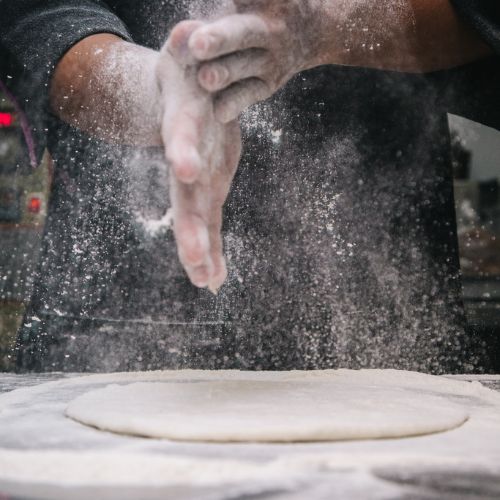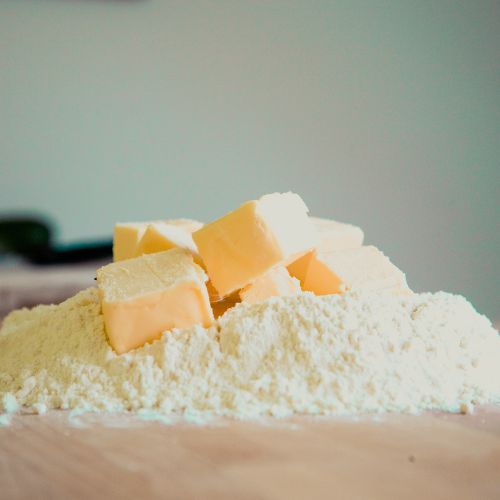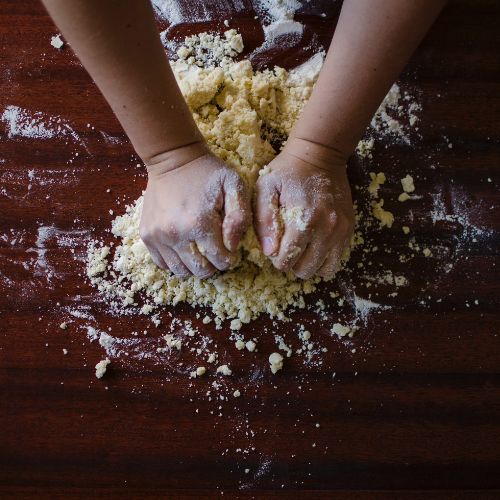Types Of Flours For Baking (Different Types of Baking Flour)
Baking is a delightful activity that brings joy and happiness to both the baker and those who get to enjoy the delicious treats that emerge from the oven. The process of measuring, mixing, and watching the ingredients transform into delectable creations is a truly magical experience. And among the essential elements in baking, different types of flours play a vital role in shaping the overall baking experience.
One of the most exciting aspects of baking is experimenting with various types of flours. Each type brings its unique flavor, texture, and characteristics to the table, allowing bakers to create a wide array of mouthwatering goodies. Whether it’s all-purpose flour, whole wheat flour, cake flour, or even alternative flours like almond or coconut flour, each one adds its distinct touch to the final outcome.
All-purpose flour, the most commonly used flour, is versatile and can be used in a wide range of recipes. It provides a balance between protein and gluten content, making it suitable for various baked goods, from cookies to bread. Its neutral taste allows other ingredients to shine, giving bakers the freedom to play with flavors and experiment with different add-ins.
Whole wheat flour, on the other hand, adds a nutty and wholesome flavor to baked goods. It contains the entire grain, providing more fiber and nutrients compared to refined flours. Whole wheat flour is perfect for hearty bread, muffins, and rustic cookies, giving them a denser texture and a satisfying taste.
Cake flour is a fine-textured flour with a low protein content. Its silky texture produces light and tender cakes with a delicate crumb. The lower protein content reduces gluten formation, resulting in a softer and more delicate finished product. Cake flour is an essential ingredient for fluffy, melt-in-your-mouth cakes that bring smiles to faces.
Alternative flours like almond flour or coconut flour are gaining popularity due to dietary preferences and restrictions. These flours provide gluten-free and grain-free options for individuals with sensitivities or those looking for healthier alternatives. Almond flour adds a rich, nutty flavor to baked goods, while coconut flour imparts a subtle tropical taste. They can be used in a variety of recipes, from cookies and cakes to pancakes and bread.
In conclusion, baking is not only a fun and creative activity but also a source of immense happiness. The process of transforming ingredients into delicious treats is incredibly satisfying. Different types of flours add their unique characteristics to the baking experience, allowing for endless possibilities and flavors. Whether it’s the versatility of all-purpose flour, the wholesome goodness of whole wheat flour, the delicate texture of cake flour, or the alternative options provided by almond and coconut flours, each type of flour contributes to the joy of baking and the smiles it brings to our faces. So grab your apron, preheat the oven, and let the magic of baking unfold!
How To Remove Excess Oil From Baked Cake?
Types Of Flours For Baking (Different Types of Baking Flour)

When it comes to baking, the type of flour you use can greatly influence the texture, flavor, and overall success of your baked goods. Here are some of the most common types of flours used in baking:
- All-Purpose Flour: All-purpose flour is versatile and suitable for a wide range of baking recipes. It is a blend of hard and soft wheat, providing a balance between protein and gluten content. All-purpose flour is commonly used for cookies, cakes, muffins, and bread.
- Whole Wheat Flour: Whole wheat flour is made from grinding the entire wheat kernel, including the bran, germ, and endosperm. It has a nutty flavor and a denser texture compared to all-purpose flour. Whole wheat flour is rich in fiber and nutrients, making it a healthier option. It is often used in bread, muffins, and cookies for a heartier taste.

- Cake Flour: Cake flour is a finely milled flour with a low protein content. It has a delicate texture and produces light, tender cakes with a fine crumb. The lower protein content reduces gluten formation, resulting in a softer and more delicate finished product. Cake flour is ideal for fluffy cakes, pastries, and delicate baked goods.
- Bread Flour: Bread flour has a higher protein content than all-purpose flour, typically around 12-14%. The higher protein helps create gluten, which gives bread its structure and chewiness. Bread flour is commonly used in yeast bread recipes, pizza dough, and other baked goods that require a strong and elastic dough.
- Self-Rising Flour: Self-rising flour is a combination of all-purpose flour, baking powder, and salt. It is convenient for recipes that call for these ingredients, as it eliminates the need to measure them separately. Self-rising flour is commonly used in biscuits, pancakes, and quick breads.
- Gluten-Free Flours: Gluten-free flours are made from grains or alternative sources that do not contain gluten, a protein found in wheat, barley, and rye. Examples of gluten-free flour include almond flour, coconut flour, rice flour, and tapioca flour. These flours are suitable for individuals with gluten sensitivities or those following a gluten-free diet.
- Specialty Flours: There are various specialty flours available for specific baking needs. Examples include pastry flour (similar to cake flour but with slightly more protein), semolina flour (used in pasta and certain breads), and rye flour (commonly used in traditional rye bread). These flours add unique flavors and textures to specific recipes.
It’s important to note that different flours have varying absorption rates, so you may need to adjust the amount of liquid or other ingredients in your recipe when substituting one type of flour for another. Understanding the characteristics of different flours allows you to choose the right one for your desired outcome and helps you achieve baking success.
What are the 10 types of flour?

There are numerous types of flour available for baking, and while there are more than 10 types, here are ten commonly used types of flour:
- All-Purpose Flour: All-purpose flour is versatile and suitable for a wide range of baking recipes. It is a blend of hard and soft wheat and is commonly used for cookies, cakes, muffins, and bread.
- Whole Wheat Flour: Whole wheat flour is made from grinding the entire wheat kernel, including the bran, germ, and endosperm. It has a higher fiber content and more nutrients compared to all-purpose flour. Whole wheat flour is often used in bread, muffins, and cookies for a heartier taste.
- Cake Flour: Cake flour is a finely milled flour with a low protein content. It has a silky texture and produces light, tender cakes with a fine crumb. Cake flour is ideal for delicate baked goods that require a soft texture, such as cakes, pastries, and some cookies.
- Bread Flour: Bread flour has a higher protein content compared to all-purpose flour, typically ranging from 12% to 14%. The higher protein content helps create gluten, which gives bread its structure and chewiness. Bread flour is commonly used in yeast bread recipes, pizza dough, and other baked goods that require a strong and elastic dough.
- Self-Rising Flour: Self-rising flour is a combination of all-purpose flour, baking powder, and salt. It is pre-mixed to save time and is commonly used in recipes that call for these ingredients, such as biscuits, pancakes, and quick breads.
- Gluten-Free Flours: Gluten-free flours are made from grains or alternative sources that do not contain gluten, a protein found in wheat, barley, and rye. Examples of gluten-free flours include almond flour, coconut flour, rice flour, sorghum flour, and tapioca flour. These flours are suitable for individuals with gluten sensitivities or those following a gluten-free diet.
- Pastry Flour: Pastry flour is a finely milled flour with a protein content between all-purpose flour and cake flour. It is commonly used in delicate pastry recipes, such as pie crusts, tarts, and croissants, where a tender texture is desired.
- Rye Flour: Rye flour is made from rye grains and has a distinctive flavor. It is often used in traditional rye bread but can be incorporated into other bread recipes for added flavor and texture.
- Almond Flour: Almond flour is made from finely ground blanched almonds. It is a gluten-free flour that adds a rich, nutty flavor to baked goods. Almond flour is commonly used in macarons, cookies, and cake recipes.
- Coconut Flour: Coconut flour is made from dried, ground coconut meat. It is high in fiber and has a unique texture and flavor. Coconut flour is commonly used in gluten- and grain-free recipes and is especially popular in muffins, pancakes, and cookie recipes.
These ten types of flour offer various options for different baking needs, dietary preferences, and flavor profiles. Choosing the right flour for your specific recipe can greatly impact the texture, taste, and overall success of your baked goods.
READ MORE
Can I Substitute Butter For Oil In Brownie Mix